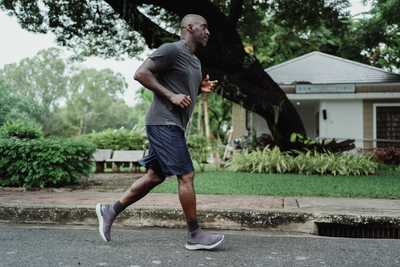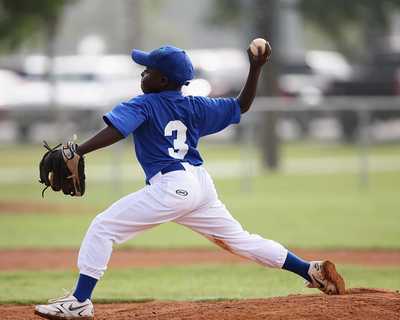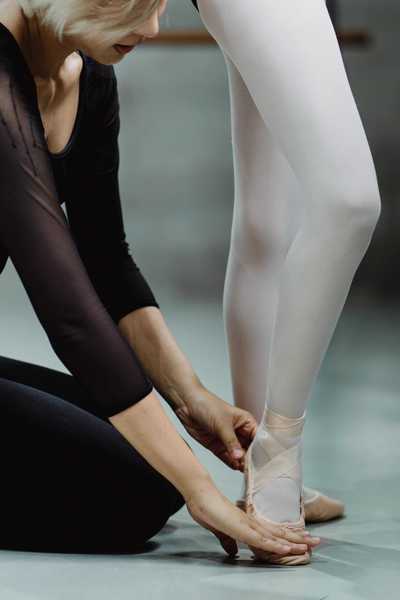What is a sport injury?
Sports injuries are injuries that occur when engaging in sports or exercise. That’s pretty straightforward.
We often associate sport injuries with heavy impacts like a football tackle, but most sport related injuries are little more low key. Sprains, strains, and tendonitis are some of the most common injuries and they can occur from overtraining, lack of conditioning, or improper form.
Injuries in sports are going to happen. However, thanks to advances in injury prevention research, injury rates have steadily declined since 2013 according to the National Safety Council.
Top Sports Injuries

Runners Ankle

Runners Knee

Dancer's Hip

Tennis Elbow/Golfer's Elbow

Pitcher's Shoulder
Runner’s Ankle
This is generally an overuse injury resulting from a combination of a history of ankle sprains and Achilles tendinopathy.
Ankle sprains are really common in physically active people. And, while the symptoms of a simple sprain may resolve quickly, underlying instability may persist for years. If you couple that instability with tendinopathy to the tough band of tissue that runs along the back of the ankle (Achilles), you have a recipe for bad news. Runner’s ankle presents as pain in the back (posterior) part of the ankle but it can often be avoided with our simple injury prevention steps.
Runner’s Knee
Runner’s knee, aka patellofemoral pain syndrome, presents as pain behind or around the knee cap.
It is usually worse running downhill or descending steps. The good news is runner’s knee isn’t a structural problem, it is a functional complication. Like many other conditions on this list, runner’s knee is caused by overtraining with altered mechanics coming from some other part of the body. If you have knee pain from athletic activities, schedule an appointment today for a functional evaluation. The team at Champion Wellness can help you pinpoint what areas are dysfunctional and provide a rehab program tailored to your needs.
Dancer’s Hip
Dancer’s hip, or snapping hip syndrome, is not exclusive to the dance population.
It refers to a snapping or popping sensation in the side, front (groin), or back of the hip (the “sit bone”) and is common in athletes who perform forceful leg movements. While it is most common in ballet dancers, it is also frequently noticed by soccer players, gymnasts, equestrians, runners, and weight lifters. Although snapping hip is generally painless and harmless, in some cases it can lead to bursitis or tendonitis conditions. A thorough exam is key to determining the root cause and developing a targeted treatment and rehabilitation program.
Tennis Elbow/Golfer’s Elbow
Tennis elbow and golfer’s elbow are both forms of tendonitis of the elbow.
Tennis elbow is characterized as pain on the outside of the elbow whereas golfer’s elbow presents with pain on the inside of the elbow. Other than that key difference, they are incredibly similar conditions. A tendon is a tough band of tissue that attaches a muscle to bone. When that tendon has micro tears and becomes inflamed it produces pain and we call it tendonitis. Tennis elbow and golfer’s elbow tendonitis often occur as a result of overuse coupled with a muscle imbalance or improper form. The team at Champion Wellness can help you avoid tendonitis at the elbow with our simple injury prevention steps.
Pitcher’s Shoulder
While the name suggests this is a baseball or softball injury, any athlete that performs repetitive overhead motions can sustain this condition.
In addition to pitchers, this can be seen with athletes in volleyball, tennis, or swimming. Pitcher’s shoulder presents as pain with throwing due to overuse under altered mechanics. It is a complex diagnosis as throwing athletes require a delicate balance of shoulder mobility and stability. Prevention of shoulder injuries requires control of not only the shoulder but also the upper torso and core. If you have shoulder pain with overhead motions, see our team about an evaluation of your movement patterns and discuss a prevention and rehabilitation program tailored to your needs.
Injury prevention steps

Step 1: Evaluate

Step 2: Educate

Step 3: Rehabilitate
Step 1: Evaluate
The first step of injury prevention is evaluation. Proper form and efficient movement patterns are key to athletic performance. However, even elite athletes are subject to muscle fatigue which can hinder proper form. It’s not always possible to recreate every circumstance that plays a factor in athletic performance while in an office setting, but there are series of tests which help us narrow down underlying issues. And, when possible, we also like to collaborate with coaches, trainers, or other therapists who are familiar with your training regime.
Step 2: Educate
Call me a nerd, but I think education is the most important step for most things in life. You do not need to be an expert on a sport to enjoy participating, but you should have a rough idea of the demand on your body. At Champion Wellness, after we evaluate for proper function and rule out underlying issues, we candidly discuss goals and requirements for your desired activity. Not only do we want to educate you on how your body is functioning, we also want to learn from you. Every patient is unique and your objectives are important to us.
Rehabilitate
Rehabilitation is a step-by-step process to recover from an injury. Often, how a person progresses through their rehab objectives determines readiness for the next steps or returning to competition. But you do not need to be injured to benefit from these processes! Many athletes use rehab, or “pre-hab”, to prepare for a big event or simply achieve optimal performance.
